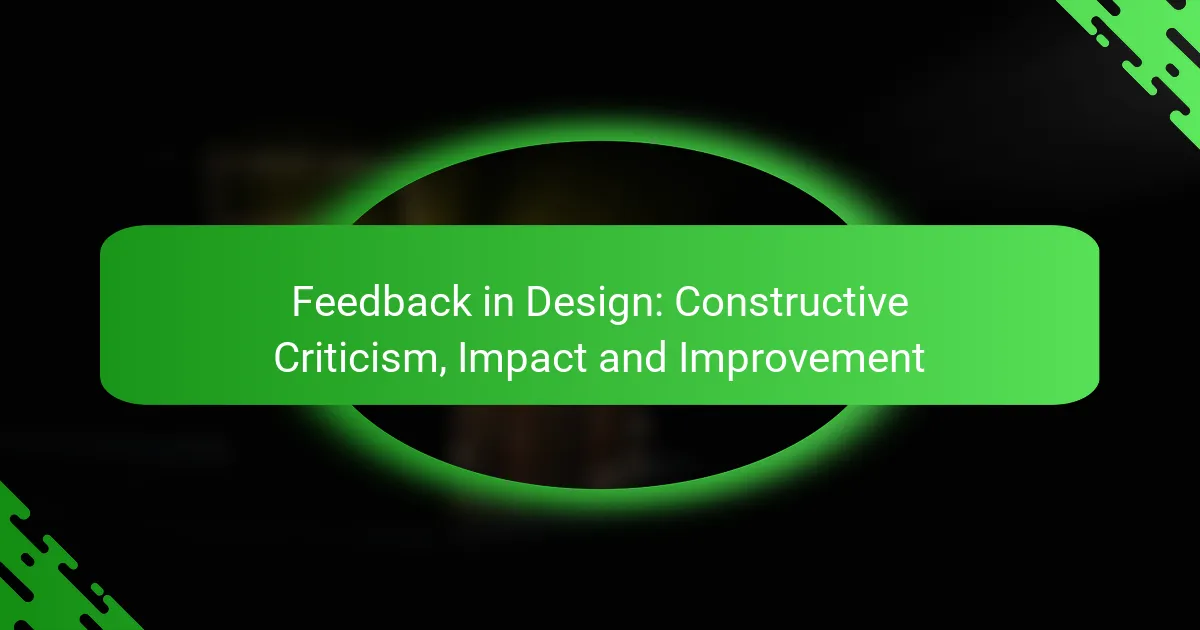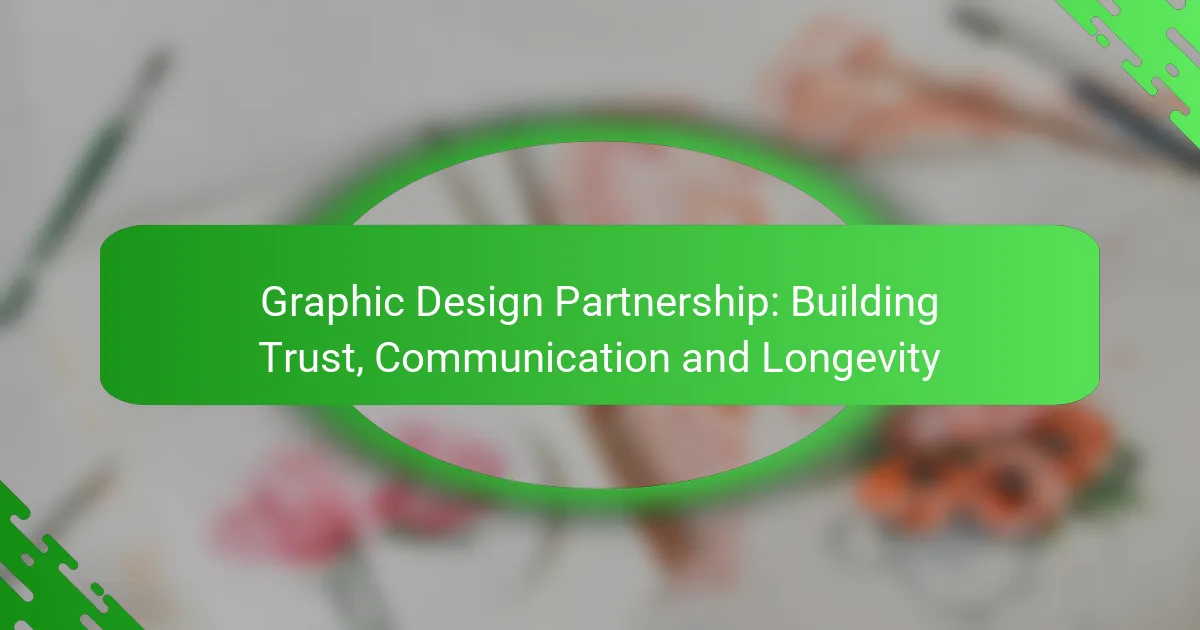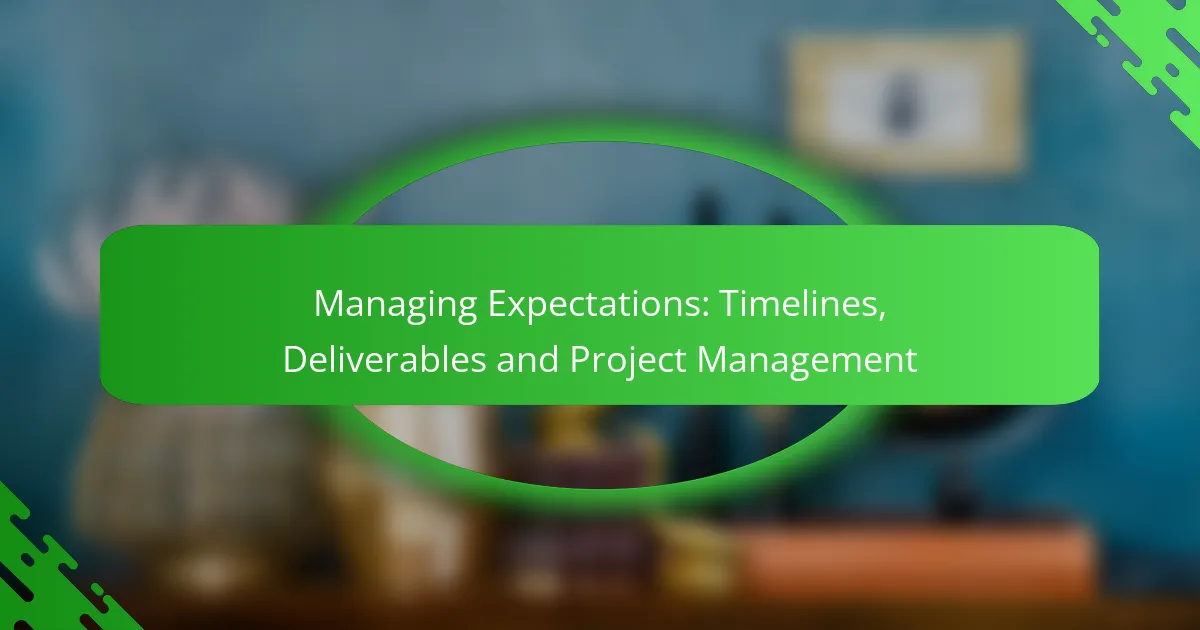The design process is a structured journey that transforms initial concepts into tangible outcomes through several key phases. By setting clear expectations and utilizing essential tools, teams can enhance collaboration and ensure that the final design is both effective and user-centered.
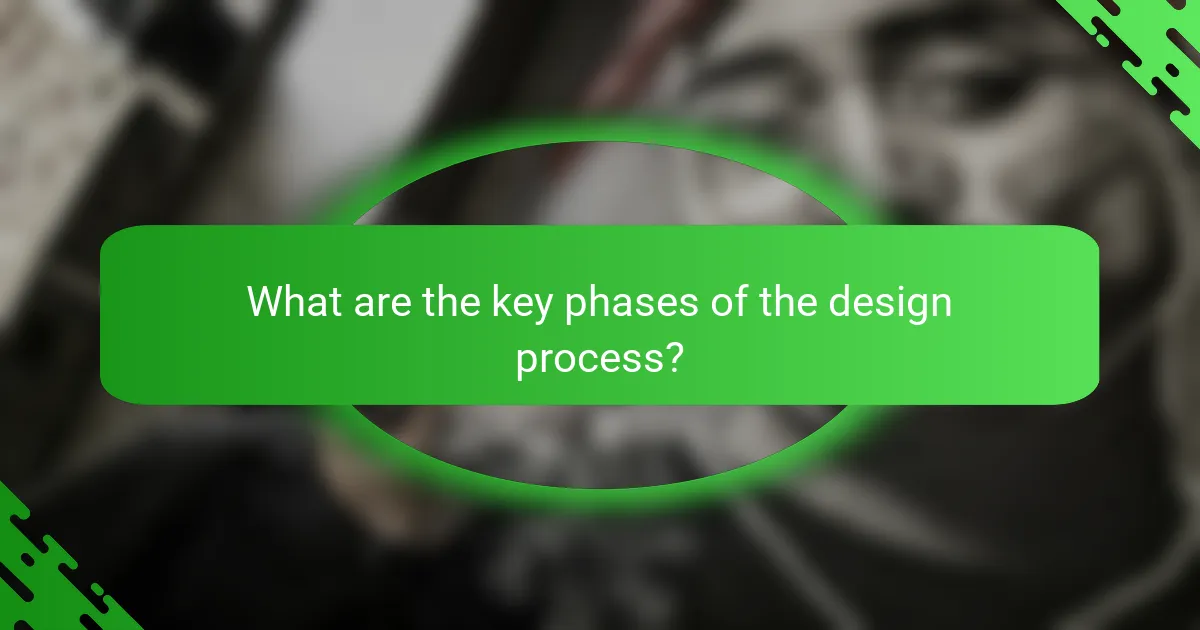
What are the key phases of the design process?
The design process typically consists of several key phases that guide a project from initial ideas to final implementation. Understanding these phases helps ensure a structured approach, leading to effective and user-centered design outcomes.
Research and Discovery
The research and discovery phase involves gathering information about the project, target audience, and market trends. This can include user interviews, surveys, and competitive analysis to identify needs and opportunities.
During this phase, it’s crucial to document findings and insights, as they will inform the subsequent design decisions. Utilizing tools like empathy maps or personas can help synthesize user data into actionable insights.
Concept Development
In the concept development phase, designers generate ideas and explore various design solutions based on the research findings. Brainstorming sessions, sketching, and creating mood boards are common practices to visualize concepts.
It’s important to evaluate ideas against user needs and project goals, selecting the most promising concepts for further refinement. This phase often involves collaboration with stakeholders to ensure alignment and gather feedback early on.
Design Execution
The design execution phase is where selected concepts are transformed into tangible designs. This includes creating wireframes, prototypes, and visual designs that represent the final product.
Designers should focus on usability and aesthetics, ensuring that the designs are not only visually appealing but also functional. Tools like Figma or Adobe XD can facilitate collaboration and iteration during this phase.
Testing and Feedback
Testing and feedback involve evaluating the designs with real users to identify any usability issues or areas for improvement. This can be done through usability testing sessions, where users interact with prototypes and provide feedback.
Incorporating feedback is essential for refining the design. It’s advisable to conduct multiple rounds of testing, focusing on different aspects of the user experience, to ensure the final product meets user expectations.
Final Delivery
The final delivery phase encompasses the completion and handoff of the design to development teams for implementation. This includes preparing design specifications, assets, and documentation to ensure a smooth transition.
Effective communication with developers is key during this phase to address any questions or concerns. Following a clear timeline and ensuring all elements are ready can help avoid delays in the project launch.

How to set expectations for each phase?
Setting expectations for each phase of the design process involves clear communication about timelines, resources, and client roles. By establishing these parameters upfront, teams can align their efforts and minimize misunderstandings throughout the project.
Timeline Estimates
Timeline estimates are crucial for managing project expectations. Typically, design phases can range from a few weeks to several months, depending on the project’s complexity and scope. For example, initial concept development might take 2-4 weeks, while user testing could extend over 4-8 weeks.
To create accurate timelines, consider using a Gantt chart or similar project management tool. This visual representation helps track progress and adjust deadlines as needed, ensuring all stakeholders remain informed.
Resource Allocation
Resource allocation involves assigning the right personnel and tools to each phase of the design process. This may include designers, developers, and project managers, as well as software and equipment. A balanced team can significantly enhance productivity and creativity.
When planning resource allocation, aim for a mix of skills that cover all necessary areas. For instance, a small project might require one designer and one developer, while larger projects may need a dedicated team for each phase. Regularly review resource needs to adapt to changing project demands.
Client Involvement
Client involvement is essential for ensuring the design aligns with their vision and requirements. Regular check-ins and feedback sessions can help keep the project on track and address any concerns early. Aim for structured meetings at key milestones, such as after initial concepts and before final delivery.
Encourage clients to provide input throughout the process, but also set boundaries to avoid scope creep. For instance, limit feedback rounds to two or three per phase to maintain momentum while still valuing client insights.
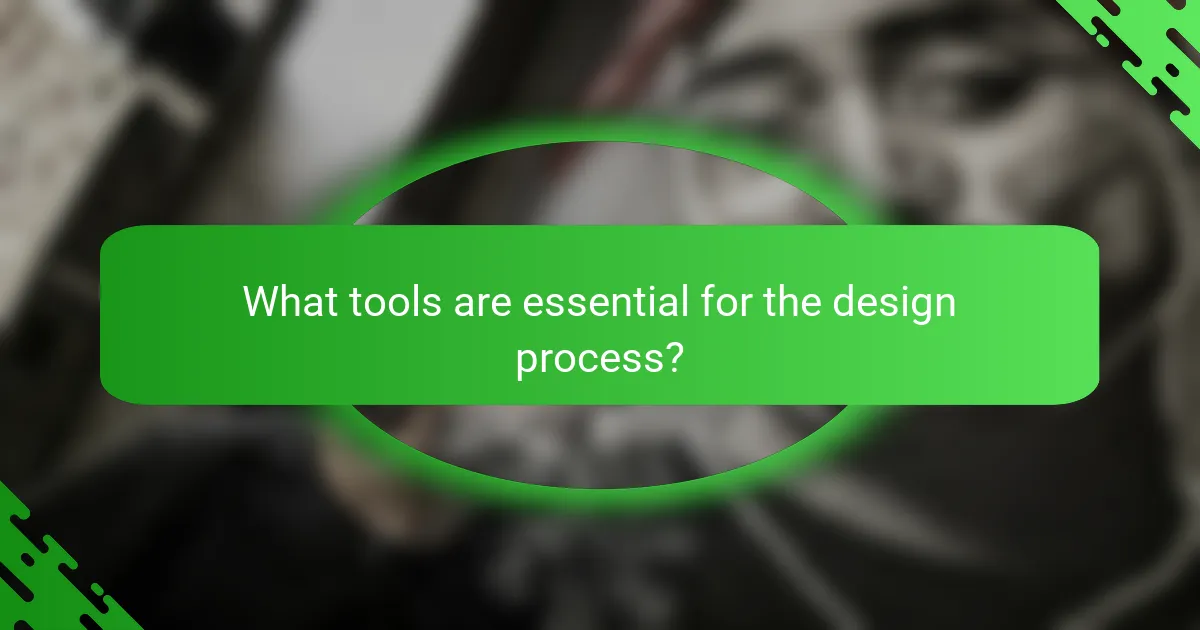
What tools are essential for the design process?
Essential tools for the design process include software that facilitates creativity, collaboration, and efficiency. Popular options range from graphic design suites to prototyping platforms, each serving specific needs in the design workflow.
Adobe Creative Suite
Adobe Creative Suite is a comprehensive collection of graphic design tools, including Photoshop, Illustrator, and InDesign. These applications are widely used for tasks such as photo editing, vector graphics, and layout design.
When using Adobe Creative Suite, consider the learning curve associated with each application. Beginners may find Photoshop’s extensive features overwhelming, while experienced users can leverage its capabilities for professional-level projects.
Subscription costs for Adobe Creative Suite can vary, typically ranging from $20 to $80 per month, depending on the plan and included applications.
Sketch
Sketch is a vector-based design tool primarily used for web and mobile interface design. Its intuitive interface and robust features make it a favorite among UX/UI designers.
One key advantage of Sketch is its focus on collaborative design, allowing multiple users to work on a project simultaneously. However, it is only available for macOS, which may limit accessibility for some teams.
Sketch offers a subscription model, generally priced around $9 per month per user, making it a cost-effective option for small teams.
Figma
Figma is a cloud-based design tool that enables real-time collaboration among team members. It is particularly effective for creating user interfaces and prototypes, allowing designers to share their work easily.
Figma’s browser-based platform means it can be accessed from any device, enhancing flexibility for remote teams. Its pricing starts with a free tier, while professional plans can range from $12 to $45 per editor per month.
One common pitfall is neglecting to organize design files properly, which can lead to confusion during collaboration. Establishing clear naming conventions and file structures can mitigate this issue.
InVision
InVision is a prototyping tool that allows designers to create interactive mockups and gather feedback from stakeholders. It integrates seamlessly with other design tools, enhancing the overall workflow.
InVision’s strength lies in its ability to simulate user interactions, making it easier to visualize the end product. However, it may require additional tools for design creation, as it is primarily focused on prototyping.
Pricing for InVision typically starts at around $7.95 per user per month, with options for larger teams that may require more advanced features.
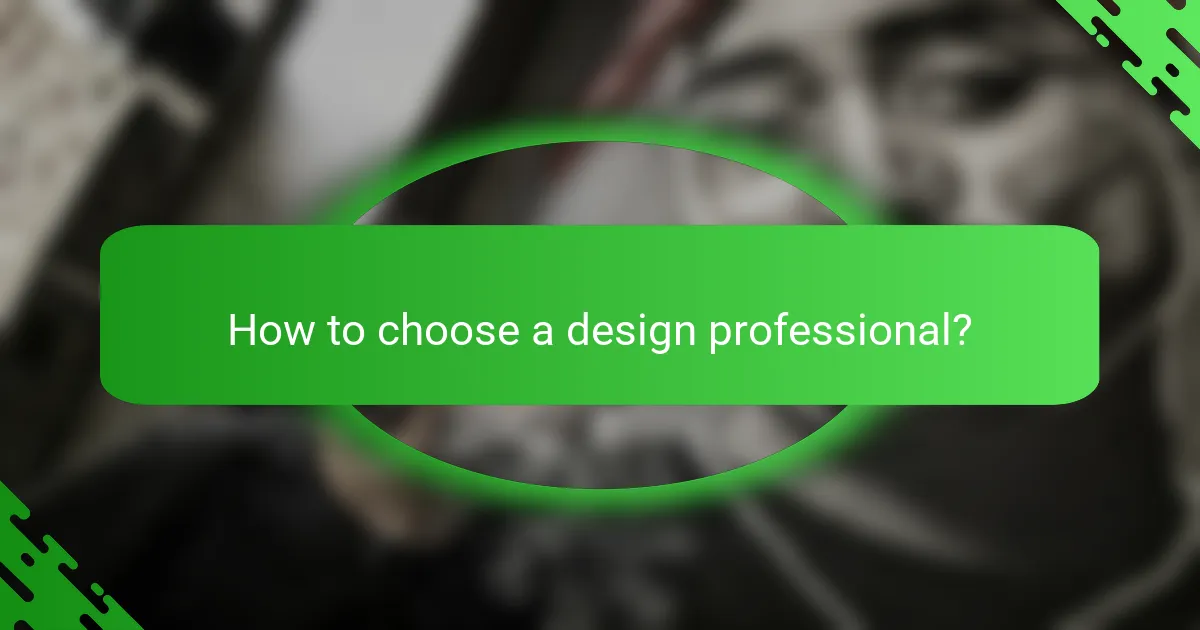
How to choose a design professional?
Choosing a design professional involves evaluating their skills, experience, and fit for your specific project needs. Focus on their portfolio, client feedback, and areas of expertise to ensure they align with your vision and requirements.
Portfolio Review
A thorough portfolio review is essential when selecting a design professional. Look for a diverse range of projects that demonstrate their creativity, technical skills, and adaptability to different styles and industries.
Check for case studies that outline the design process, challenges faced, and the solutions provided. This insight can reveal their problem-solving abilities and how they approach design challenges.
Client Testimonials
Client testimonials provide valuable insights into a designer’s reliability and professionalism. Seek out reviews that highlight not only the quality of work but also the designer’s communication skills and ability to meet deadlines.
Consider reaching out to previous clients for direct feedback. This can give you a clearer picture of what to expect in terms of collaboration and overall satisfaction with the final product.
Specialization Areas
Understanding a designer’s specialization areas can help you determine if they are the right fit for your project. Some designers may focus on branding, while others excel in web design or product development.
Identify your project needs and look for professionals who have a proven track record in those specific areas. This targeted approach can lead to more effective and impactful design solutions.
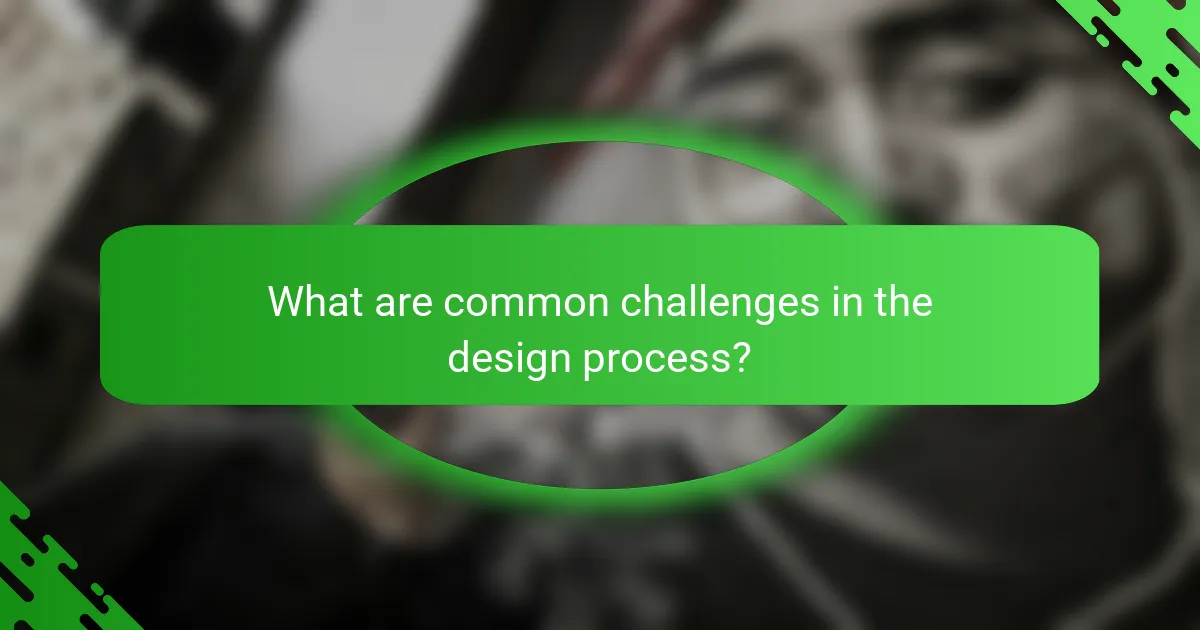
What are common challenges in the design process?
Common challenges in the design process include scope creep, communication issues, and balancing creativity with client expectations. These obstacles can hinder progress, inflate budgets, and extend timelines if not managed effectively.
Scope Creep
Scope creep refers to the gradual expansion of a project’s requirements beyond its original objectives. This often occurs when clients request additional features or changes after the project has started, leading to increased workload and potential delays.
To manage scope creep, establish clear project goals and document all requirements at the outset. Regularly review these goals with stakeholders to ensure alignment and avoid misunderstandings. For example, using a project management tool can help track changes and maintain a clear scope.
It’s crucial to communicate the implications of changes, such as potential impacts on timelines and budgets. A simple checklist for managing scope creep includes: 1) Define project scope clearly, 2) Set up a change request process, and 3) Regularly update stakeholders on progress and any changes. This proactive approach can help keep the project on track and within budget.

